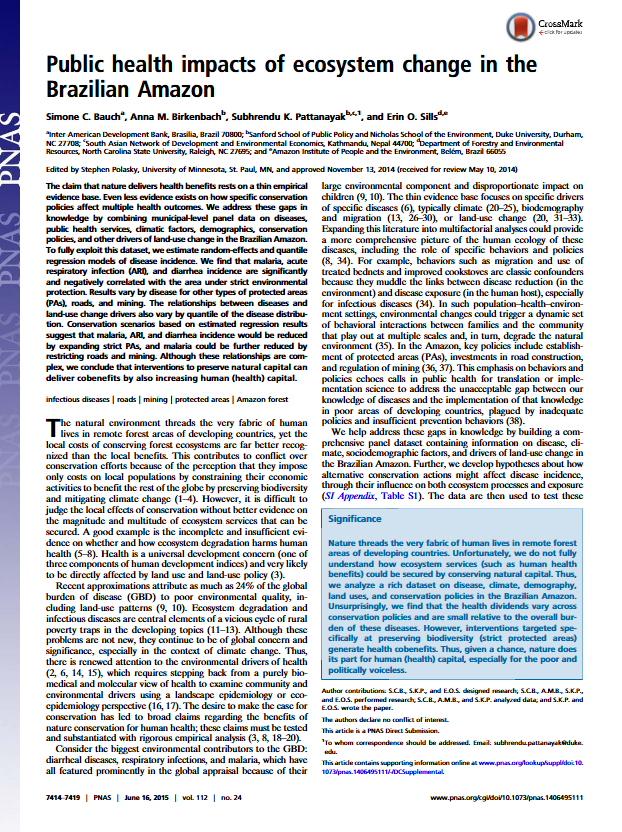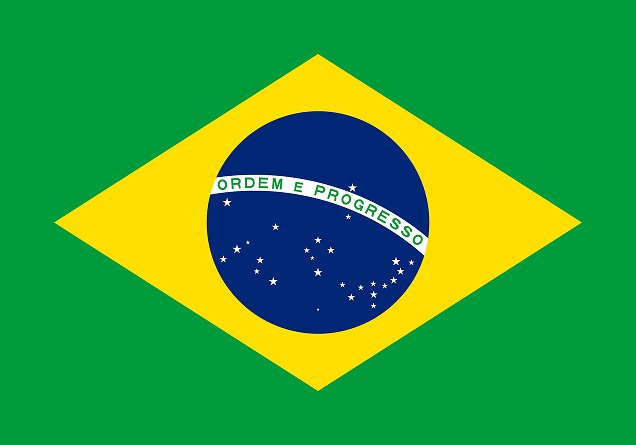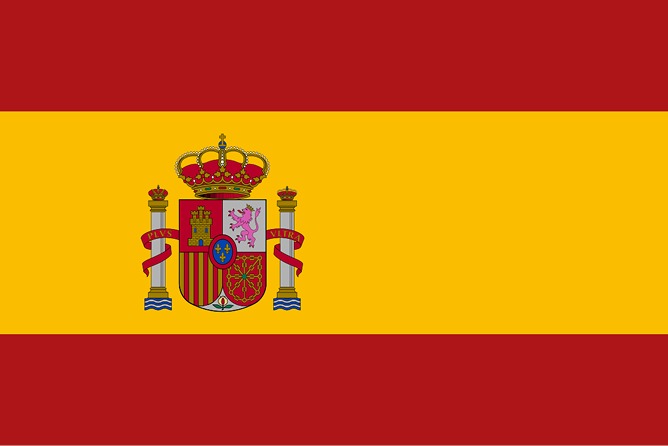Não conseguimos encontrar a internet
Tentando reconectar
Algo deu errado!
Aguarde enquanto voltamos ao normal

Public health impacts of ecosystem change in the Brazilian Amazon
15/06/15| Título | Public health impacts of ecosystem change in the Brazilian Amazon |
|---|---|
| Autores | Simone C. Bauch (a) Anna M. Birkenbach (b) Subhrendu K. Pattanayak (c) Erin O. Sills (d) |
| Vinculação dos autores | (a) Inter-American Development Bank, Brasilia, Brazil 70800; (b) Sanford School of Public Policy and Nicholas School of the Environment, Duke University, Durham, NC 27708; (c) Sanford School of Public Policy and Nicholas School of the Environment, Duke University, Durham, NC 27708; South Asian Network of Development and Environmental Economics, Kathmandu, Nepal 44700; (d) Department of Forestry and Environmental Resources, North Carolina State University, Raleigh, NC 27695; Amazon Institute of People and the Environment, Belém, Brazil 66055. |
| Ano de publicação | 2015 |
| Meio de publicação | Proccedings of the National Academy of Sciences of the United States of America (PNAS) - (Volume 112, No. 24) |
| DOI (Digital Object Identifier) | https://doi.org/10.1073/pnas.1406495111 |
Abstract
The claim that nature delivers health benefits rests on a thin empirical evidence base. Even less evidence exists on how specific conservation policies affect multiple health outcomes. We address these gaps in knowledge by combining municipal-level panel data on diseases, public health services, climatic factors, demographics, conservation policies, and other drivers of land-use change in the Brazilian Amazon. To fully exploit this dataset, we estimate random-effects and quantile regression models of disease incidence. We find that malaria, acute respiratory infection (ARI), and diarrhea incidence are significantly and negatively correlated with the area under strict environmental protection. Results vary by disease for other types of protected areas (PAs), roads, and mining. The relationships between diseases and land-use change drivers also vary by quantile of the disease distribution. Conservation scenarios based on estimated regression results suggest that malaria, ARI, and diarrhea incidence would be reduced by expanding strict PAs, and malaria could be further reduced by restricting roads and mining. Although these relationships are complex, we conclude that interventions to preserve natural capital can deliver cobenefits by also increasing human (health) capital.
 PT
PT
 ES
ES
 EN
EN

